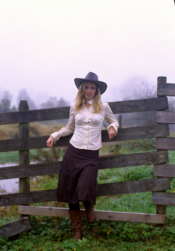Hi all,
So, I had noticed it in the past, but I thought it was due to underexposure because I was using aperture priority on my OM2n at the time. So I tried it again with a handheld lightmeter, metering for the shadows, but the problem is still there. In strong backlit situations, my subject appears muddy, super grainy, and I don't know why exactly. The lens performs perfectly well in other situations. I don't know if it is because of :
1) a focusing error : because the sun coming directly in makes it harder to see if I'm really in focus (although I try my best to get it right)
2) a lens coating problem : the 2 examples below were taken with the OM Zuiko 50mm F/1.4, but I've had the same problem with my 135mm. I'm sure the lens coatings back then were not as efficient as the ones we have now, but still...
3) a lack of lens hood : I don't use one, but as I said, I had the same problem with the 135mm that has a built-in hood, so...
Anyway. If you have an advice, I'm all ears
Thanks beforehand

 www.flickr.com
www.flickr.com
So, I had noticed it in the past, but I thought it was due to underexposure because I was using aperture priority on my OM2n at the time. So I tried it again with a handheld lightmeter, metering for the shadows, but the problem is still there. In strong backlit situations, my subject appears muddy, super grainy, and I don't know why exactly. The lens performs perfectly well in other situations. I don't know if it is because of :
1) a focusing error : because the sun coming directly in makes it harder to see if I'm really in focus (although I try my best to get it right)
2) a lens coating problem : the 2 examples below were taken with the OM Zuiko 50mm F/1.4, but I've had the same problem with my 135mm. I'm sure the lens coatings back then were not as efficient as the ones we have now, but still...
3) a lack of lens hood : I don't use one, but as I said, I had the same problem with the 135mm that has a built-in hood, so...
Anyway. If you have an advice, I'm all ears

Thanks beforehand











